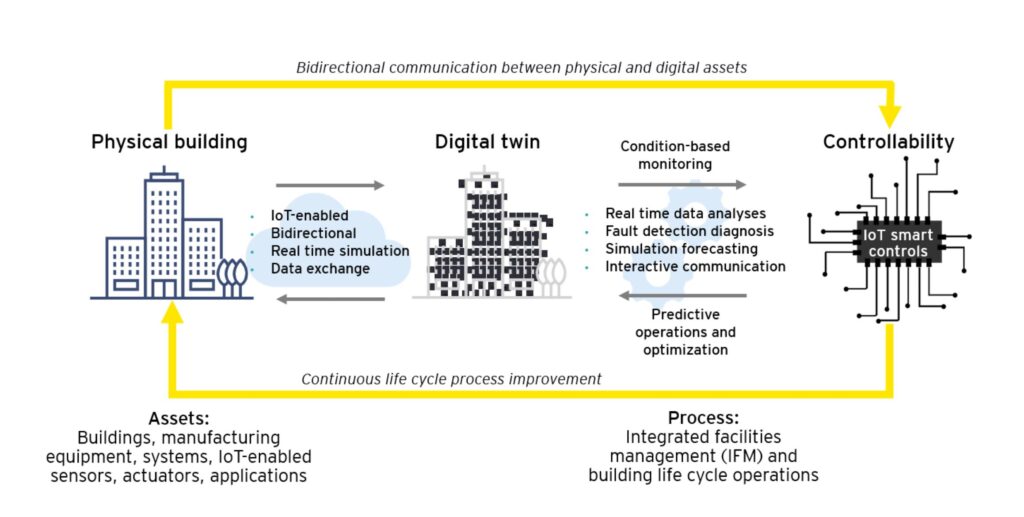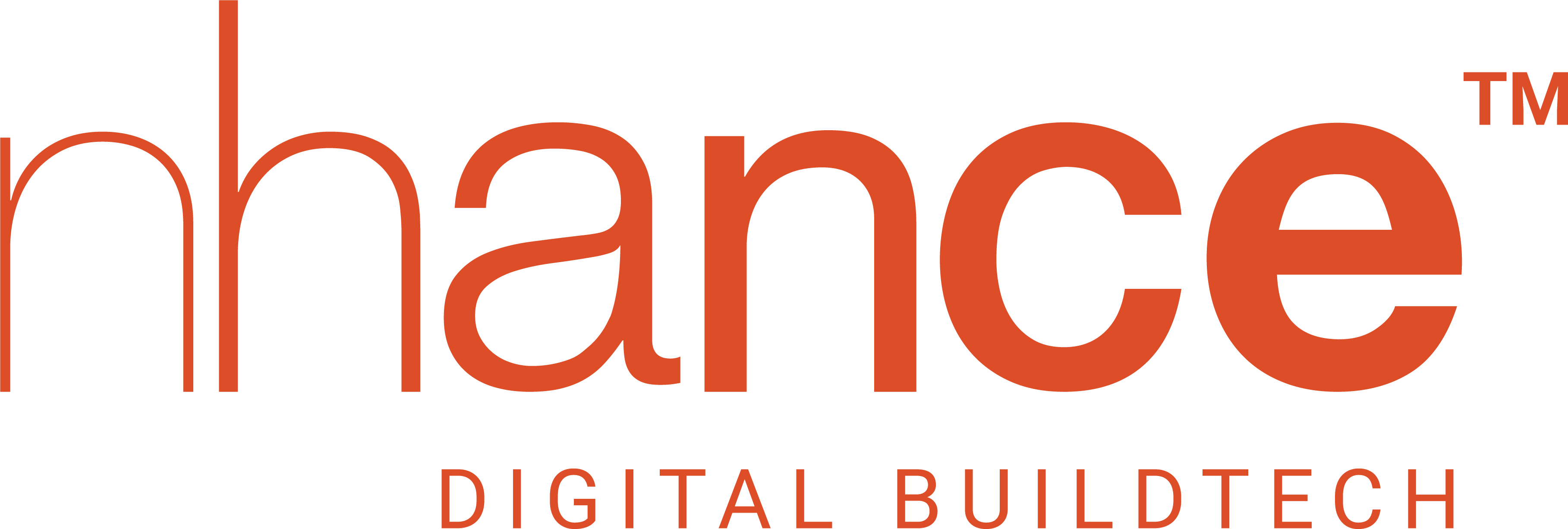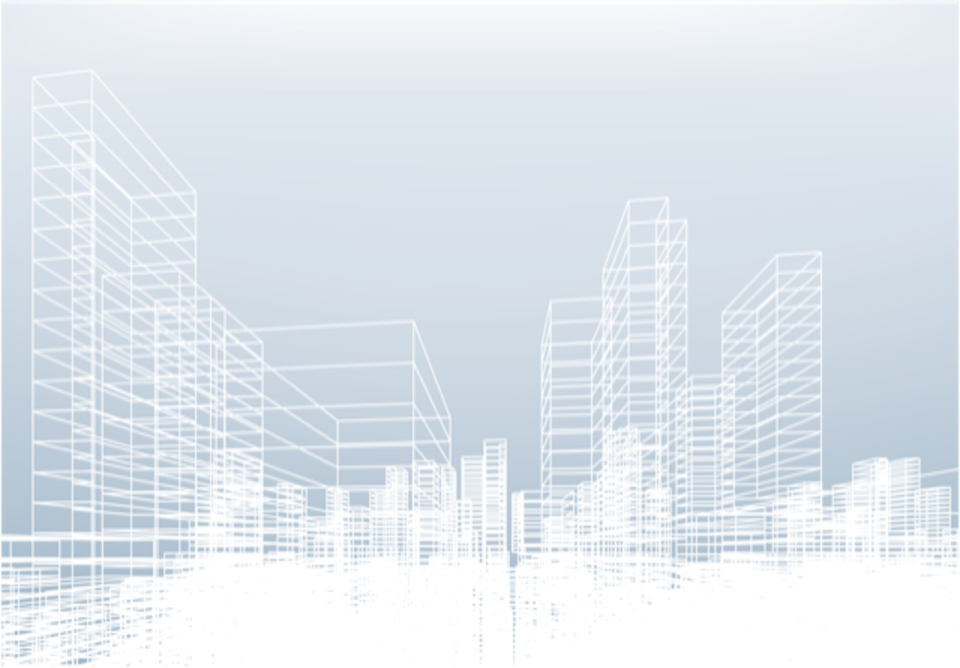Whether an organization owns, occupies, or manages a building, it requires a lot of data and information sharing. Gathering the right information is a costly undertaking if one wants to have all the information ready from day one of operation. By creating a data-rich model of a building, digital twin allows for better planning, issues management, cost reduction, and an improved digital future.
The digital twin is an up-to-date model of a physical asset/facility. It contains both structured as well as unstructured data which can easily be shared among various stakeholders. Besides modelling, digital twins help in predicting, simulating, and optimizing a given space/facility.
The concept of digital twin is gaining momentum in the real estate and construction industry like others. Before digital twins, the optimization in building and constructions was mostly reactive, but with digital twins and IoT, the facilities/buildings can be monitored in real-time. The optimization and decision-making are more predictive leaving scope for a proactive response for any probable anomaly.
Being live right from the capital phase of the building to handover, digital twin helps in creating a unified building database. Combined with IoT, it provides an immense opportunity for data analytics to foster informed decision-making. Allowing virtual collaboration between stakeholders, the digital twin capabilities accelerate digital transformation and facilitate interoperability.

Image Source: EY Digital Twin: the Age of Aquarius in construction and real estate
As per a white paper published by EY, the adoption of digital twins can reduce real estate operating costs by up to 35%. Providing a digital representation of real-world systems and components, these new-age technologies powered by data offer enhanced ROI. Offering real-time visibility of buildings, it allows enterprises to plan and manage spaces in much better and smarter ways. Leveraging BIM and IoT data from sensors and smart equipment, organizations get insights into situations in advance hence are more equipped to make logical and smart business decisions.
A joint study by Harvard Business Review and Microsoft reveals that 66% of global organizations adopt smart technologies for energy management. In the same report, 72% of executives stated reducing facility inefficiencies and operational costs as their prime business goal. Saving operational cost and maintenance expenditure, digital twin makes buildings more than just a physical asset. Smart technologies and IoT make buildings reactive and help them adjust to the occupants’ needs.
With digital twins becoming the latest trend, enterprises can create a competitive advantage by integrating them with IoT and innovative technologies. When combined with IoT, digital twins can be used in numerous ways to reduce costs. It enhances awareness of situations, helping organizations make better business decisions by predicting any faltering situation and helping them fix the issues on time.
But to realize the benefits of digital twins, a holistic approach and integrated systems are crucial. Establishing integrated connections beyond point-to-point is one challenge that many organizations need to overcome. They need smart equipment and intelligent systems within buildings to keep the data updated. From tracking occupancy patterns to real-time space utilization to collecting data points and enhancing security, organizations have been using digital twins to enhance efficiency and control costs.
If you’re searching for ways to create future-ready spaces and have integrated access to all data, nhance can lead the way. Connecting smart service providers with enterprises, nhance enables better space/facility management. For more details, visit nhance.ai.








